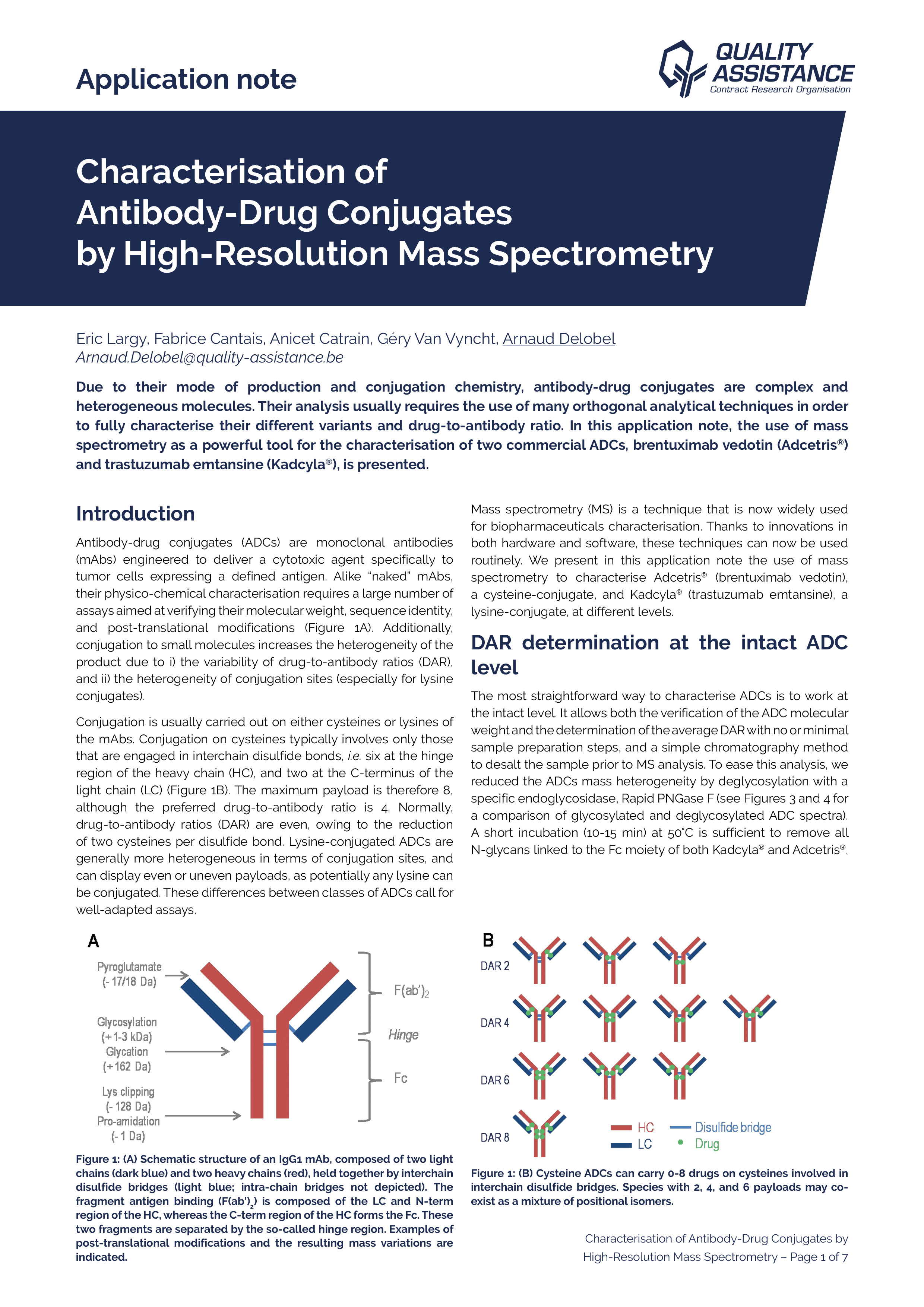Characterisation of Antibody-Drug Conjugates by High-Resolution Mass Spectrometry

Due to their mode of production and conjugation chemistry, antibody-drug conjugates are complex and heterogeneous molecules. Their analysis usually requires the use of many orthogonal analytical techniques in order to fully characterise their different variants and drug-to-antibody ratio. In this application note, the use of mass spectrometry as a powerful tool for the characterisation of two commercial ADCs, brentuximab vedotin (Adcetris®) and trastuzumab emtansine (Kadcyla®), is presented.
In addition to the typical LC/MS workflows aimed at mAbs characterisation, a comprehensive set of methods has been developed to characterise ADCs at the intact, subunit, and peptide level. These methods are applicable to either or both lysine- and cysteineconjugated ADCs.
Herein, determination of the drug load distribution and average DAR of Adcetris® and Kadcyla® was performed at different levels, using both MS and UV responses, with an appreciable consistency. Positional isomers of Adcetris® were distinguished by a state-of-the-art HICbased 2D-LC setup, while the position and occupancy of the numerous conjugation sites of Kadcyla® were readily determined by peptide mapping, using ETD fragmentation to relieve ambiguities at the amino-acid level.